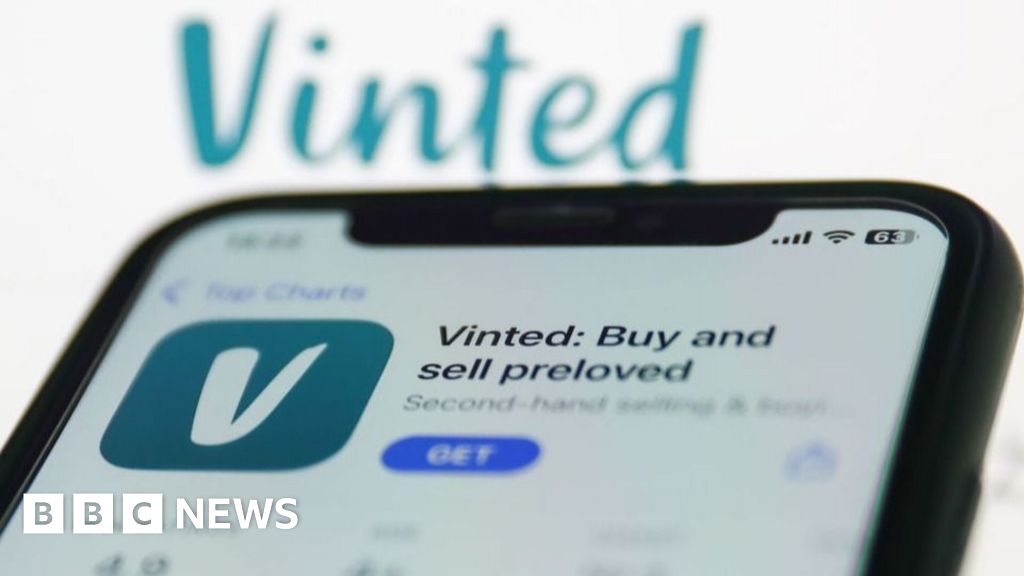Business
Centre Raises Print Media Advertisement Rates By 26% To Support Industry

New Delhi: The Central government on Monday announced a 26 percent hike in advertisement rates for print media and introduced a premium for colour advertisements, aiming to strengthen the sector amid rising costs and growing competition from digital platforms.
As per the revised structure, black-and-white advertisement rates for newspapers with a circulation of one lakh copies have been increased from Rs 47.40 to Rs 59.68 per sq. cm. The government has also accepted the committee’s recommendations on offering premium rates for colour ads and preferential placement, the Information & Broadcasting Ministry said in a statement.
The ministry noted that higher government ad rates will provide crucial revenue support to newspapers, helping them sustain operations, maintain quality journalism, and promote local news coverage at a time when input costs—particularly newsprint—have surged.
Strengthening financial stability, the statement added, will enable print media organisations to invest in better content and continue serving the public interest effectively.
The Central Bureau of Communication (CBC), the nodal agency for government publicity across media platforms, last revised print advertisement rates in January 2019 based on the recommendations of the 8th Rate Structure Committee, with the rates valid for three years.
To review the structure afresh, the 9th Rate Structure Committee, chaired by AS&FA (I&B), was set up on November 11, 2021. Between November 2021 and August 2023, the committee engaged with major associations representing small, medium and large newspapers—including the Indian Newspaper Society (INS), All India Small Newspapers Association (AISNA), and Small-Medium-Big Newspapers Society (SMBNS).
The panel examined key cost factors such as WPI inflation in newsprint, imported newsprint prices, wage costs, general inflation trends, and other production-related expenses before submitting its recommendations on September 23, 2023.
According to the government, the upward revision of advertisement rates brings print media compensation closer to market realities and acknowledges its continued relevance in a diversified media ecosystem. The move, it added, will help improve the reach and effectiveness of government communication efforts across the country.
Business
E.W. Scripps stock surges 40% after Sinclair takes stake, pushes for a merger

Signage is displayed outside the Sinclair Broadcast Group Inc. headquarters in Cockeysville, Maryland, U.S.
Andrew Harrer | Bloomberg | Getty Images
Sinclair disclosed a stake in fellow broadcast station owner E.W. Scripps on Monday, in a move to push toward a merger of the companies.
Sinclair, which acquired a roughly 8% position in Scripps per the filing, recently launched a strategic review of its own business that could result in a tie-up. Scripps, for its part, has seen its struggles mount in the competitive industry and is among the smallest of its peers.
In the filing, Sinclair said it has been engaged in “constructive” discussions regarding a deal and believes that, if it were to reach an agreement, a transaction could be completed within nine to 12 months.
Sinclair said in the filing that based on trading multiples, there would be an expected $300 million in synergies if a merger were to take place.
Scripps’ stock rose more than 40% on Monday while Sinclair’s stock was up 7%.
Sinclair, which acquired the stake for about $15.6 million, declined to comment beyond the SEC filing.
In a statement on Monday, Scripps said its board “will take all steps appropriate to protect the company and the company’s shareholders from the opportunistic actions of Sinclair or anyone else.”
“Scripps’ board of directors and management are focused on driving value for all of the company’s shareholders through the continued execution of its strategic plan,” the company said in its statement. “The board and management are aligned on doing only what is in the best interest of all of the company’s shareholders as well as its employees and the many communities and audiences it serves across the United States.”
The statement added that the board continues to evaluate “any transactions and other alternatives that would enhance the value of the company and would be in the best interest of all company shareholders.”
Broadcast TV station group owners have suffered like the rest of media companies in recent years due to the shift away from the traditional pay-TV bundles and toward streaming. These broadcast stations, for the most part, make the majority of their money from so-called retransmission fees, which are paid on a per-subscriber rate by traditional TV distributors.
Broadcast station owners like Sinclair have been eager to do mergers as they push for deregulation under the Trump administration.
In August, Nexstar Media Group, the biggest owner of these stations, agreed to acquire Tegna for $3.54 billion.
Sinclair, meanwhile, is also considering spinning off or splitting its ventures unit, which includes pay-TV network The Tennis Channel and marketing technology business Compulse, which was recently rebranded to Digital Remedy.
Sinclair and its advisors held discussions with potential merger partners earlier this year, CNBC previously reported.
Business
France investigating Vinted over alleged links to pornographic content

Second-hand clothing platform Vinted is under investigation in France after some user accounts were found to be directing visitors to pornographic content.
France’s Children’s Rights Commissioner Sarah El-Haïry said she had asked watchdog Arcom to examine the allegations first reported in French media.
Vinted, which has 23 million users in France, has no age-verification procedure – meaning children and teenagers could have been exposed to pornographic material without having to show proof they were over 18.
In a statement, the Lithuania-based company said it had a “zero-tolerance policy regarding unsolicited communications of a sexual nature or the promotion of sexual services”.
“All inappropriate and illegal content is removed, and where necessary we take measures against users, including blocking them definitively from our site,” it was cited as saying by the AFP news agency.
Vinted is taking the situation “very seriously”, it added.
Reports first surfaced after some sellers showing photographs of swimwear or lingerie were found to be luring viewers to their personal pages on adult platforms such as OnlyFans.
“Predators have been using the sale of ordinary items of clothing to direct people to porn sites,” El-Haïry said.
France has recently issued warnings to other global e-commerce platforms, including Shein – headquartered in Singapore – after products including childlike sex dolls appeared in their marketing listings.
French officials say the case against Shein forms part of a wider investigation into other major e-commerce platforms accused of allowing illicit products to be sold online.
Paris prosecutors are examining whether Shein, AliExpress, Temu and Wish breached laws relating to violent, pornographic or “undignified” content accessible to minors.
Shein and AliExpress are also being investigated specifically over the alleged dissemination of child-related pornographic material. The cases have been referred to the Paris Office des Mineurs, which handles offences involving the protection of children.
Shein has already banned the sale of all sex dolls on its platform worldwide and says it is permanently blocking seller accounts linked to the items.
The French consumer watchdog, the Directorate General for Competition, Consumer Affairs and Fraud Control, said descriptions of the dolls left “little doubt as to their child-pornography nature”.
Business
Trade relief: India to gain from US tariff cuts on select agri items; officials say level playing field restored – The Times of India

India is set to benefit modestly from the United States’ decision to withdraw reciprocal tariffs on a set of agricultural products, including tea, coffee and spices, the commerce ministry said on Monday, PTI reported. The tariff exemptions, announced through a White House Executive Order on November 12, took effect the next day.The move rolls back duties imposed under the April 2 reciprocal tariff regime and covers a wide range of items — coffee, tea, tropical fruits, fruit juices, cocoa, spices, bananas, oranges, tomatoes, beef and certain fertilisers. Officials said the change creates a level playing field for Indian exporters in categories where the country ships over USD 1 billion worth of goods each year, including spices, tea, coffee, fruits, nuts, processed foods, essential oils and edible roots.“Now our exports will have a level playing field,” Joint Secretary in the Department of Commerce Darpan Jain told reporters.However, independent assessments suggest the boost for India could be limited. Global Trade Research Initiative (GTRI) co-founder Ajay Srivastava noted that India has little presence in several of the largest exempted lines such as tomatoes, citrus fruits, melons, bananas and most fresh fruits and juices.He said India may see marginal gains in spices and niche horticulture, but the larger beneficiaries of the US move will likely be Latin American, African and ASEAN exporters unless India strengthens cold-chain capacity, scales up production and broadens its agricultural export basket.
-

 Tech1 week ago
Tech1 week agoFrom waste to asset: Turning ethanol production CO₂ into jet fuel
-

 Tech2 days ago
Tech2 days agoNew carbon capture method uses water and pressure to remove CO₂ from emissions at half current costs
-

 Politics4 days ago
Politics4 days agoBritish-Pakistani honoured for transforming UK halal meat industry
-

 Sports2 days ago
Sports2 days agoTexas A&M officer scolds South Carolina wide receiver after touchdown; department speaks out
-
Sports1 week ago
College football winners and losers: The catch of the year saves Indiana
-

 Business1 week ago
Business1 week agoMore than 1,000 flights cancelled as US air traffic cuts enter second day
-

 Tech4 days ago
Tech4 days ago$25 Off Exclusive Blue Apron Coupon for November 2025
-

 Sports1 week ago
Sports1 week agoSteelers vs. Chargers (Nov 9, 2025) Live Score – ESPN





